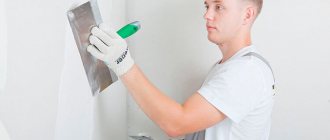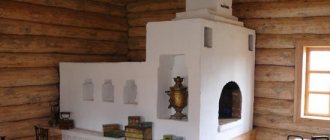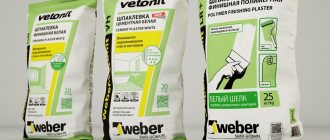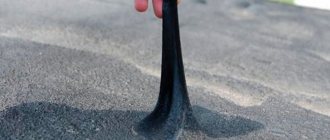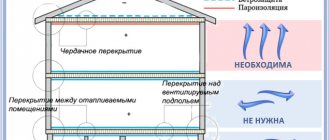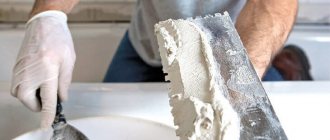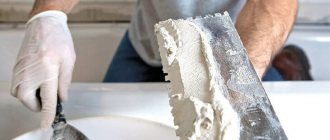Car bumper putty is intended for restorative repairs of parts. It masks scratches, dents, cracks and chips in paintwork. You need to select putty based on certain criteria:
- High elasticity.
- Good adhesion to any polymer surface.
- Strength.
- Possibility of manual grinding.
It is better to putty a plastic car bumper with a two-component composition of fine-grained consistency. The mixture is applied to the surface to be repaired and leveled with a spatula. The main components of such putty are resins, fillers and pigments. A hardener is used to polymerize the applied layer of mass.
How to choose
To choose the right putty for a car bumper, you need to determine how it will be used in the future. For plastic parts use:
- Finishing mixtures. They provide a dense, non-porous coating that is easy to sand.
- Universal compositions. They have a medium-sized fraction filler. The surface turns out to be porous, but is polished to a perfectly smooth surface.
Putties have different chemical compositions (polyester, acrylic and epoxy mixtures, nitro putties). The price depends on the type of mixture and brand. Before you buy a product to repair your car, you need to clarify the characteristics and nuances of applying the mass.
Types of putties
There are a variety of putty products on sale, which differ in their components and purpose.
By method of use
Before purchasing putty, you need to make sure that its purpose corresponds to the intended purpose of use. According to this indicator, all putties can be grouped as follows:
- Filling. These putties contain medium and coarse fillers. They are used to quickly fill chips and cracks, create the desired relief and rough level the surface. After hardening, the coating will be quite porous, so sanding it to perfect evenness will not be possible.
- Finishing. They are the final ones. Typically applied after using filler mixtures. They contain fine-grained fillers, which contribute to the formation of a smooth putty layer after polymerization. The pores in such a surface are practically invisible, it is smooth and easy to sand.
- Universal. Such putties are the most popular among auto repair specialists. They include filler of medium size fraction. After drying, the mass can be sanded, and it seals well any unevenness and chips.
By chemical composition
Depending on the composition of the components, all putties are classified as follows:
- Polyester. They are two-component mixtures based on polyester resin. They are characterized by low shrinkage after drying and can be applied in a layer up to 0.5 cm thick. They dry quickly (in about an hour), after which they can be sanded, polished, or painted. They contain solvents that evaporate when dried and give off a pungent odor.
- Epoxy. They are prepared on the basis of epoxy resin and various fillers. The kit always includes a hardener, which is added immediately before processing the bumper. Due to the toxicity of solvents (styrene or others), it is necessary to work with epoxy putties only with strict adherence to personal protective measures.
- Acrylic. Compositions containing acrylic resin exhibit serious shrinkage after drying, and, in addition, cannot boast of high strength. They are occasionally used to repair minor damage to the bumper.
- Nitro putties. These mixtures contain a nitro binder and filler - talc, kaolin. They are also subject to shrinkage and can only be applied in very thin layers.
Putty options depending on the source material
To choose the right putty, you also need to take into account the base material and the type of damage. Below are tips for choosing the right product:
- With fiberglass. This putty is ideal if you need to repair serious “injuries” to a part, eliminate deformations or rust. The material has powerful reinforcing properties, is dense and durable. It is best suited for processing metal products and for eliminating through cracks. For large areas, putty with fiberglass is not used, since it is not very elastic and can peel off due to constant vibration.
- With aluminum. Used to eliminate defects on parts exposed to temperature changes. Due to the presence of aluminum powder, they have an expansion coefficient approaching that of metals. Due to the fine-grained texture, putties with aluminum are easily sanded, become perfectly smooth and can serve as finishing. They dry for quite a long time, so they can be applied to large surfaces.
- Lightweight. These materials contain empty glass beads, so the mass itself is quite light. It is well suited for repairing large damage to the hood and bumper.
- Traditional. Such putties have a medium-grained structure, are perfectly applied and distributed over the surface. After drying, they require the application of finishing putty.
- Finishers. Used as a final finish before painting. They leave the surface smooth due to the presence of the finest-grained fillers in the composition. Usually they are black or white.
- Liquid. Produced in liquid form, applied by spraying, excellent for treating large damage. They give a thin but durable layer, dry quickly, and are easily sanded.
16th position. Set (putty, hardener) NOVOL BUMPER FIX
This flexible putty has good adhesion to most polyester materials, except PET and Teflon. Good adhesion to polypropylene surfaces allows the mixture to be applied to unprimed areas.
Set (putty, hardener) NOVOL BUMPER FIX
| Characteristics | |
| Blend color | White |
| Type | Auto putty |
| Chem. compound | Polyester |
| Number of components | 2 |
| Minimum application temperature | +10 °C |
| A country | Poland |
The putty is applied easily and evenly, filling voids and leveling the surface of the bumper. The composition can withstand heavy loads: both temperature and mechanical. Before filling the surface, you need to remove the gloss from it with a sanding machine or waterproof paper with an abrasive effect. After abrasive treatment of the part, oil contamination must be removed using anti-silicone. Before application, a hardener (2%) is added to the mixture.
Apply the putty with a rubber or metal spatula, carefully leveling the layers. After this, the surface can be painted, but it must first be primed with a special acrylic compound. When masking deep defects, putty should be applied in layers no thicker than 2 mm. Dry each layer for at least 20 minutes.
Required Tools
To repair a bumper, you may need various tools, devices and consumables. Here is a comprehensive list:
- soldering iron with a power of 300 W or more;
- flat tip for soldering iron;
- clamp;
- construction stapler with staples;
- drill;
- sandpaper with grain from P80 to P1200 and a block;
- Sander;
- solvent (White spirit or other);
- polishing paste;
- putty;
- automotive primer;
- paint and varnish;
- brush or spray gun.
Personal protective equipment should also be prepared in advance. You should not start work without durable clothing, a respirator, glasses and gloves, so as not to harm your health.
15th position. Body Bumper Soft - polyester bumper putty
This polyester car bumper putty consists of 2 components. The plastic composition effectively eliminates various surface defects of the car body (scratches, unevenness) due to its high filling ability. The finished coating is quite durable, non-porous and easy to sand. The putty is suitable for drying using an infrared lamp.
Body Bumper Soft - polyester bumper putty
| Characteristics | |
| Blend color | White |
| Type | Auto putty |
| Chem. compound | Polyester |
| Minimum application temperature | +10 °C |
| A country | Greece |
BODY SOFT putty can be applied to polymer materials (various types of plastic), fiberglass, wood and factory paintwork. The composition cannot be used on reactive soils or nitrocellulose materials.
Application on thermoplastic materials is unacceptable: in this case, before application, the surface of the part is completely cleaned down to the metal base. The mixture is prepared in the ratio: 2% hardener to 100% putty.
Preparatory work
Puttying is carried out only on a previously prepared base. As preparatory measures, the car is washed with special products and dried thoroughly so that there is no moisture left in the seams. Next, the surface of the bumper is degreased with a solvent, and the old paintwork is cleaned off by grinding. You cannot ignore preparation - in this case, the new coating may soon crack and collapse.
11th position. Set (putty, hardener) HB BODY Proline 617
With this polyester filling putty, even large areas of the body surface can be easily repaired. Can be applied to all types of metals. The composition creates a durable, elastic and resistant coating.
Set (putty, hardener) HB BODY Proline 617
| Characteristics | |
| Blend color | Green |
| Type | Auto putty |
| Chem. compound | Polyester with fiberglass added |
| Number of components | 2 |
| Minimum application temperature | +10 °C |
| A country | Greece |
A balanced concentration of polyester resins and fiberglass ensures easy and uniform application of the mixture. Layers of putty dry quickly enough, the finished coating is easily processed with various sanding tools: a machine, abrasive paper.
It is permissible to use the putty mixture on parts of the body that are susceptible to corrosion. The coating gives minimal shrinkage. The composition is prepared in the ratio: 2% hardener to 100% putty. The coating must be applied within 3-5 minutes (at +20 °C) after preparation. It is important not to exceed the dose of hardener.
What happens if you don’t prime and immediately paint a “bare” plastic bumper?
Most modern car bumpers are made from polypropylene (PP). This plastic has low surface energy, which is not good for painting. This indicator affects how the paint will spread and stick to the part. Plastic primer acts on a chemical level and increases paint adhesion to the bumper. If you do not prime the “bare” plastic bumper with a special primer, the paint will not last reliably or for long. Perhaps you have noticed cars with paint peeling off the bumpers in clumps. Usually these are taxi drivers who save on repairs and turn to unqualified craftsmen. This is exactly the case when a special primer was not used before painting the bumper. You can also read the article about “preparing a new bumper for painting.” It describes in detail the intricacies of preparation, allowing you to eliminate the occurrence of problems during painting and further operation.
7th position. Car Fit Plastic putty on plastic
This putty for plastic car bumpers is characterized by quick drying and ease of sanding. The kit includes a spatula for quick and even application of the product. The final coating is thin, but remains durable and flexible even at low temperatures.
Car Fit Plastic putty on plastic
| Characteristics | |
| Blend color | White |
| Type | Auto putty |
| Chem. compound | Polyester |
| Number of components | 2 |
| Minimum application temperature | +10 °C |
| A country | Germany |
Dried putty can be sanded dry by hand or with a sander. Preliminary application of primers is not required: it is enough to treat the surface with an abrasive (to remove gloss) and anti-silicone (to remove traces of oils).
The putty surface can be painted, but subject to prior priming with an acrylic-based composition. Layers (up to 2 mm thick) dry in air in 20 minutes. The coating can withstand mechanical and physical stress. The putty is applicable for professional paint repair of cars.
Soldering a bumper using a gas torch
Soldering a plastic bumper with a gas torch will not work because the temperature is too high, which can reach 1000 degrees. To use a gas torch for soldering, you must purchase a special flame arrester attachment, or use a Dremel gas soldering iron, where such an attachment is included in the kit.
Soldering with a gas torch is no different from welding with a hair dryer:
- a chamfer is removed from the edges of the future seam.
- A gas burner with a nozzle is brought to the weld area, the burner flame melts the filler rod and the edges of the crack, and the rod is pressed into the seam groove.
- After cooling, the seam area is cleaned and sanded.
Most craftsmen who repair plastic bumpers use a gas torch not for soldering, but as an additional tool for other methods of bumper repair, for example, for heating reinforcing mesh or staplers.
6th position. CHAMAELEON putty for plastics + hardener
CHAMAELEON car bumper repair putty is used when repairing plastic surfaces. The two-component composition effectively fills minor scratches and other damage.
CHAMAELEON putty for plastics + hardener
| Characteristics | |
| Blend color | Black |
| Type | Auto putty |
| Chem. compound | Polyester |
| Minimum application temperature | +10 °C |
| A country | Germany |
The composition can be used on almost all types of plastics. The putty is easy to process due to its elastic and soft structure. The mixture is environmentally friendly. The finished coating cannot be sanded wet.
Before application, you need to wash the surface to be treated with soap and wipe dry, and then degrease. Blow off any dust remaining after sanding using compressed air. Degrease the treated surface again. Before application, the material must be kept at room temperature. Apply the putty slowly to avoid air bubbles. Prime the surface before further painting.
Requirements for putty
In order to properly putty the bumper and get a result no worse than after contacting a car service, it is important to select the right putty mixture. High-quality putty is a one- or two-component highly plastic mass that is easily applied to the surface and quickly hardens on it.
Most often, the base of putty for plastic or metal is polyester or epoxy resin, although there are other types of mixtures on sale. Two-component compositions are sold in the form of two bottles, one of which contains the base, the second contains the hardener. The latter starts the polymerization process, during which the putty hardens and becomes a very durable material.
A good putty, which is perfect for bumper repair, must meet a number of requirements:
- have high elasticity and do not become cracked during operation;
- have sufficient adhesion to the bumper material;
- withstand vibration and local shocks, do not crumble or peel off;
- have high strength and long service life;
- reliably and quickly fill any defects;
- enable sanding, painting or other types of processing.
2nd position. Putty for plastic GREEN LINE PLASTIC PUTTY
This elastic polyester-based putty is recommended for DIY and professional body repairs. Adheres well to most plastics.
Putty for plastic GREEN LINE PLASTIC PUTTY
| Characteristics | |
| Blend color | Dark grey |
| Type | Auto putty |
| Chem. compound | Polyester |
| Number of components | 2 |
| Minimum application temperature | +10 °C |
| A country | Russia |
Before application, you need to warm up the part at +60 °C, degrease it with anti-silicone, treat it with abrasive and clean it again. The components must be combined in the following ratio: 100 parts putty and 2 parts hardener. Mix the composition thoroughly, but not quickly (to avoid the formation of air bubbles). The pot life of the mixture is 3-4 minutes.
At +20 °C, layers of putty harden in 20 minutes. Lowering the temperature shortens the curing time. Before painting, the finished coating must be sanded and coated with acrylic primer.
DIY putty
The price of some putty mixtures is quite high, and when carrying out repairs, many craftsmen prefer to use homemade compounds. To make putty for the bumper, proceed as follows:
- prepare a convenient container, polystyrene foam, acetone and a wooden stick;
- crumble the foam into small pieces and throw it into a container;
- pour acetone into the foam, leave to dissolve and mix;
- The dense sediment that appears at the bottom is used as putty, but only immediately, since it hardens quickly.
Gluing
Bonding with fiberglass and epoxy or polyester resin is used to repair fiberglass bumpers, and in some cases, to repair bumpers made of hard, refractory plastics. The disadvantage of repairing a bumper in this way is the low strength and fragility of the repair site.
The bumper is glued using fiberglass and epoxy or polyester resin in the following order:
- Clean the front and back sides of the bumper at the point of damage using fine-grained sandpaper 5 cm from the edge of the crack, chip or hole.
- Cover the damaged area with tape on the front side of the bumper.
- Degrease the edges of the damage on the back of the bumper.
- Cut several patches from fiberglass measuring 5 cm larger than the damaged area.
- In a plastic container, mix the resin and hardener in the proportions specified by the manufacturer, mix thoroughly.
- Apply resin to the damaged area on the inside of the bumper with a brush.
- Place a fiberglass patch over the damaged area and smooth it out.
- Apply resin and apply the next fiberglass patch, repeat until the thickness of the layer reaches the approximate thickness of the bumper.
- After the resin has dried on the inside of the bumper, remove the tape from the front side, smooth the edges around the damage and form a depression.
- Degrease the surface of the repair area on the front side of the bumper.
- Apply the resin with a brush, apply a fiberglass patch, and smooth it out.
- Repeat brushing the resin and applying fiberglass patches until you are level with the bumper surface.
- Dry the bumper completely.
- Thoroughly sand the surface of the bumper with fine-grit sandpaper.
Tips and tricks
In order to achieve a good result, experts advise following the following rules.
- All stages of work must be followed.
- Maintain time intervals for drying layers of putty and paints.
- Purchase bumper products from trusted manufacturers in certified product stores.
- Select a putty that matches the material from which the bumper is made.
Proper repairs will ensure a high-quality and beautiful coating that will last for many years.
Painting
Painting a plastic bumper is done in 2-3 layers, with drying between layers for 5-10 minutes. After the paint has completely dried, varnish is applied to the bumper in two layers. Intermediate drying is also done between two layers of varnish. After painting is completed, the surface is inspected; if paint smudges are detected, light sanding and polishing is performed.
